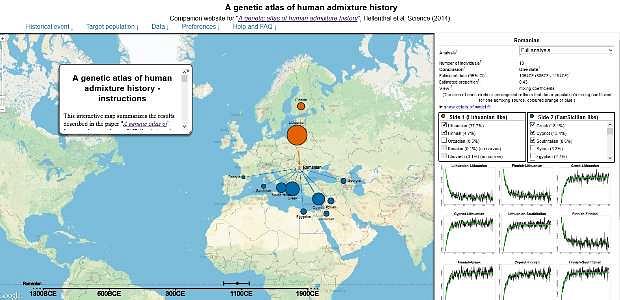New genetic map of the world shows Romanians' ties to Lithuanian, Finnish, South Italian

A genetic map of the world shows Romanians are complex mixtures of several other populations in Europe, Asia and even northern Africa.
Created by researchers at the Oxford University by sampling the DNA of 1,490 people from 91 populations, the map, called A genetic atlas of human admixture history, shows connections between Romanians and two groups of people: Lithuanian, Finnish and Russian, on the one hand, and Greek, Cypriot and South – Italian, on the other hand. The second group also includes traces of mixing with Tunisian, Sardinian, Moroccan, Basque and even Egyptian populations.
For this research, only 13 Romanian individuals were included in the tested sample.
“Modern genetic data combined with appropriate statistical methods have the potential to contribute substantially to our understanding of human history. We have developed an approach that exploits the genomic structure of admixed populations to date and characterize historical mixture events at fine scales,” according to the authors. “We used this to produce an atlas of worldwide human admixture history, constructed by using genetic data alone and encompassing over 100 events occurring over the past 4,000 years.”
The researchers identified events whose dates and participants suggest they describe genetic impacts of the Mongol empire, Arab slave trade, Bantu expansion, first millennium CE migrations in Eastern Europe, and European colonialism.
More about this genetic atlas of human admixture history here.
editor@romania-insider.com















